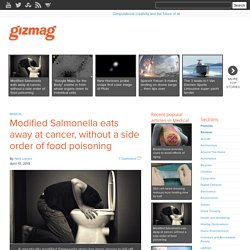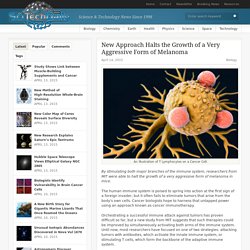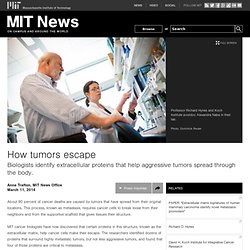

"Compound 14" mimics the effects of exercise without setting foot in the gym. Enjoying the health benefits of a back-breaking workout without actually working out sure is a tantalizing prospect.

This goes a long way to explaining the torrent of exercise equipment that promises to do more for our figures with less of our sweat and tears, and recently, the development of drugs that could imitate the beneficial effects of exercise. Protein converts pancreatic cancer cells back into healthy cells. Scientists have found that a particular protein can cause pancreatic cancer cells to revert back to normal cells (Image: Shutterstock) Scientists working in the area of pancreatic cancer research have uncovered a technique that sees cancerous cells transform back into normal healthy cells.

The method relies in the introduction of a protein called E47, which bonds with particular DNA sequences and reverts the cells back to their original state. The study was a collaboration between researchers at the Sanford-Burnham Medical Research Institute, University of California San Diego and Purdue University. The scientists are hopeful that it could help combat the deadly disease in humans. "For the first time, we have shown that over-expression of a single gene can reduce the tumor-promoting potential of pancreatic adenocarcinoma cells and reprogram them toward their original cell type," says Pamela Itkin-Ansari, adjunct professor at Sanford-Burnham and lead author of the study. Modified Salmonella eats away at cancer, without a side order of food poisoning. A genetically modified Salmonella strain has been shown to kill off cancer cells without the nasty side effects (Photo: Shutterstock) Though generally a bacteria we'd associate with a severe bout of food poisoning, previous research has suggested that Salmonella needn't always bring bad news and stomach cramps.

Certain strains have been shown to kill off cancer cells, but to use them as a form of treatment for humans without inducing any nasty side effects has so far proven difficult. But now, researchers have developed genetically modified salmonella that turns toxic only after it enters a tumor. A team of researchers from Germany's Helmholtz Center for Infection Research and Arizona State University worked with a strain known as Salmonella enterica Serovar Typhimurium. This strain has been demonstrated to colonize tumors and attack the cancer cells. New Approach Halts the Growth of a Very Aggressive Form of Melanoma. An illustration of T Lymphocytes on a Cancer Cell.

By stimulating both major branches of the immune system, researchers from MIT were able to halt the growth of a very aggressive form of melanoma in mice. The human immune system is poised to spring into action at the first sign of a foreign invader, but it often fails to eliminate tumors that arise from the body’s own cells. Cancer biologists hope to harness that untapped power using an approach known as cancer immunotherapy. Orchestrating a successful immune attack against tumors has proven difficult so far, but a new study from MIT suggests that such therapies could be improved by simultaneously activating both arms of the immune system.
Until now, most researchers have focused on one of two strategies: attacking tumors with antibodies, which activate the innate immune system, or stimulating T cells, which form the backbone of the adaptive immune system. Enlisting the immune system Immune synergy Publication: Eric F. How tumors escape. About 90 percent of cancer deaths are caused by tumors that have spread from their original locations.

This process, known as metastasis, requires cancer cells to break loose from their neighbors and from the supportive scaffold that gives tissues their structure. MIT cancer biologists have now discovered that certain proteins in this structure, known as the extracellular matrix, help cancer cells make their escape. The researchers identified dozens of proteins that surround highly metastatic tumors, but not less aggressive tumors, and found that four of those proteins are critical to metastasis.
The findings could lead to new tests that predict which tumors are most likely to metastasize, and may also help to identify new therapeutic targets for metastatic tumors, which are extremely difficult to treat. “The problem is, all the current drugs are targeted to primary tumors. Decoding the matrix “The matrix has really been understudied, because it’s not easy,” says Hynes, the Daniel K. Mputers select personal medicine.
15 February 2014Last updated at 23:11 GMT By Jonathan Amos Science correspondent, BBC News, Chicago Peter Coveney holds up a model of the HIV protease and a blocking drug molecule UK-US scientists have given one glimpse of the future of personalised medicine.

Using supercomputers, they simulated the shape of a key protein involved in HIV infection in an individual patient and then ranked the drug molecules most likely to block the activity.